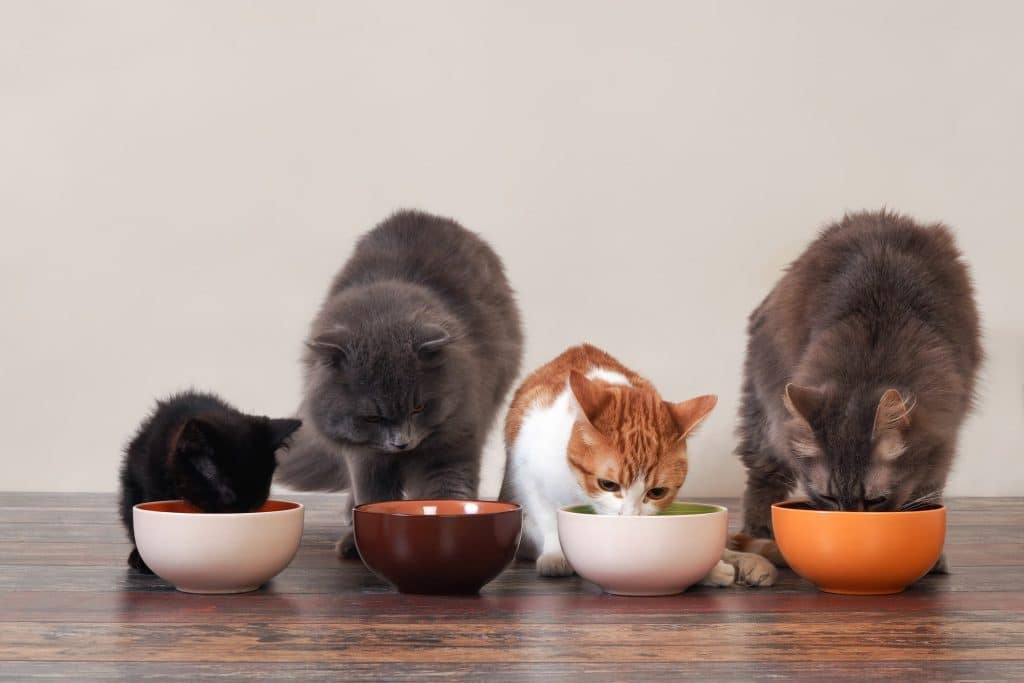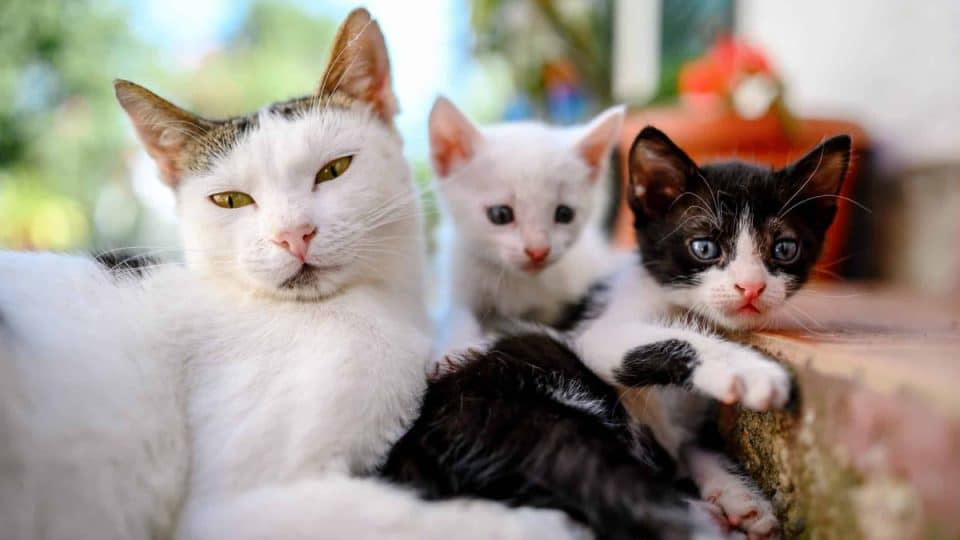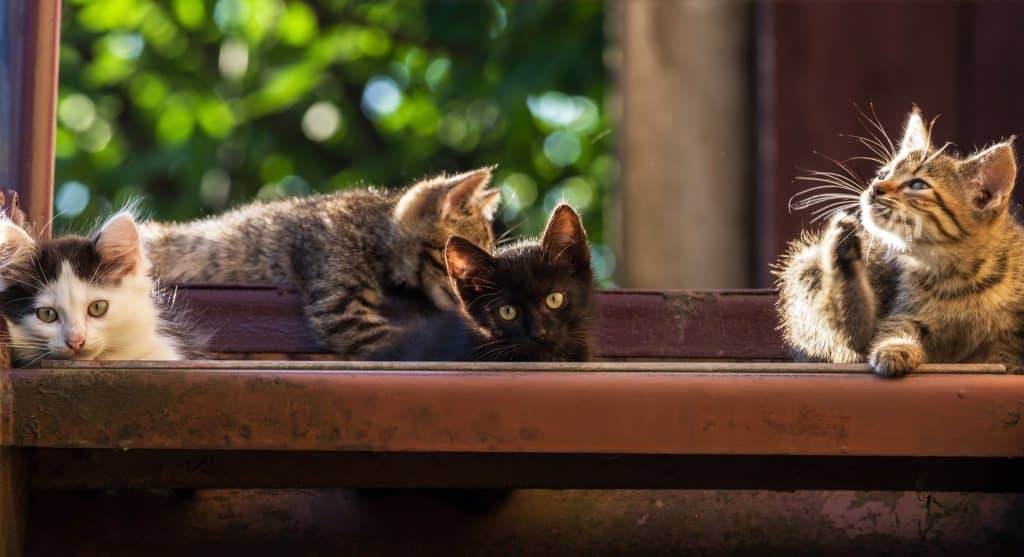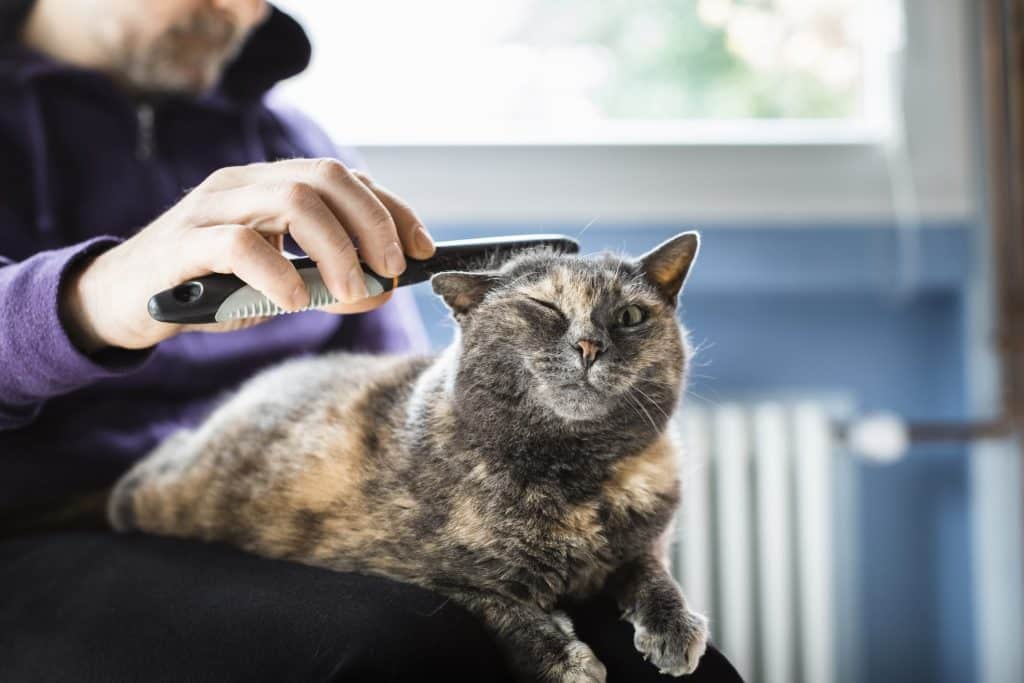- Not a substitute for professional veterinary help.
No longer the butt of the joke, the quirky cat lady persona is now embraced by the internet and pop culture. But when having a lot of cats goes beyond a cute personality trait to something concerning, it can be dangerous and even deadly.
Around 250,000 animals each year are victims of hoarding. And of the people who hoard pets, 80 percent have animals that are diseased or dying. So how do you know when someone has crossed the line? How many cats is too many for one person to have?
According to Laura Cassiday, certified cat behavior consultant and founder of Pawsitive Vibes Cat Behavior & Training, a stable multi-cat home is unmanageable when the cats are kept in inappropriately sized spaces and deprived of their essential needs. These needs are known as “The Five Freedoms of Animal Welfare.” They are “freedom from hunger or thirst, freedom from discomfort, freedom from pain or disease, freedom to express behavior normal for their species, and freedom from fear and distress.” You have too many cats when these essential needs aren’t met.
While the actual number of cats will vary for each person, Cassiday feels that having three or four cats is the sweet spot and what most people can reasonably care for.

iStock/kozorog
Signs You Have Too Many Cats
“The more cats you have, the more likely you are to see some sort of behavior problem, whether it’s something like urine marking or aggression between cats,” says Dr. Mikel Delgado, certified cat behavior consultant, founder of Feline Minds and Rover’s resident cat expert.
Fighting between cats and territorial behavior, such as spraying and urine marking, indicate that something is amiss. Additionally, here are some serious signs you have too many cats.
Malnourishment
As obligate carnivores, cats have very distinct nutritional needs. They rely on their diets to get the essential vitamins, minerals, and amino acids to function and thrive. If they don’t have these nutrients, they’re more susceptible to heart failure, blindness, seizures, ammonia buildup, and even death. Signs a cat is malnourished include lack of energy, rapid weight loss, digestive issues, and dull skin and fur.
Dehydration
Cats aren’t hardwired to seek out water, so they often need to be enticed with water fountains or given wet foods to get moisture into their diet. If a pet parent can’t ensure their cats are getting enough water, they could become chronically dehydrated, which can lead to organ failure, heart problems, and neurological issues. Sunken, dull eyes, tacky gums, and lethargy are all symptoms of feline dehydration.
Parasites
When cats are neglected or don’t get proper flea treatment, all it takes is a single cat to unleash these tiny, bloodsucking terrors into the house, putting all the other cats at risk. Fleas can cause itching, skin irritation, open wounds, and potentially deadly infections.
Kittens are especially vulnerable and at risk of serious harm. Internal parasites like roundworms are also easily transferable between cats and can even pass through an infected mother’s milk to her kittens.
Behavioral issues
According to the American Association of Feline Practitioners, a strong bond between cats and their human caregivers can increase the quality of life for everyone and reduce the likelihood of behavior problems. However, when there are too many cats in the house, it can be challenging to form relationships with each one.
Cassiday notes that cats in unhealthy households often miss out on socialization and learning to coexist with other animals and people, which can lead to them being fearful and mistrustful.
Poor health (for you and your cats)
One of the hallmarks of having too many cats is unhygienic living conditions. The lack of, or sometimes complete inability to, clean and sanitize litter boxes, bedding, toys, and food and water dishes can lead to numerous health issues. Besides a dirty and smelly home, a lack of hygiene spreads parasites, bacteria, viruses, and diseases.
These poor living conditions can also affect a person’s physical and mental health, as certain diseases can cross the species barrier and infect humans. Plus, the overall situation of having too many cats can lead a person to feel psychologically distressed.
Damaged property
When too many cats are crammed into a living space, it can wreak havoc on a home. The cats may start displaying territorial behaviors, which can lead to accidents outside the litter box. When not cleaned or appropriately treated, cat poop and urine can lead to terrible odors and stains on floors, carpets, furniture, and bedding.
Excessive shedding from having too many cats can also clog up air vents and filters, and unmet exercise needs can lead cats to scratch up and damage property.





